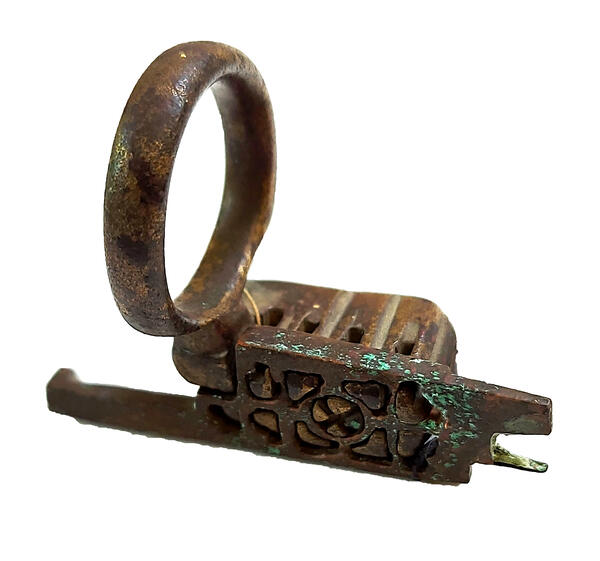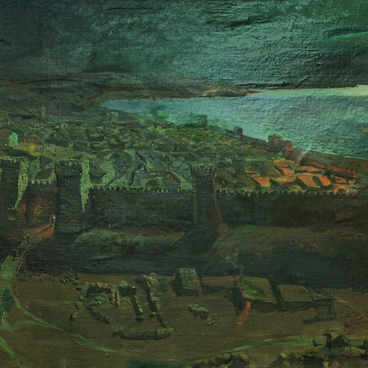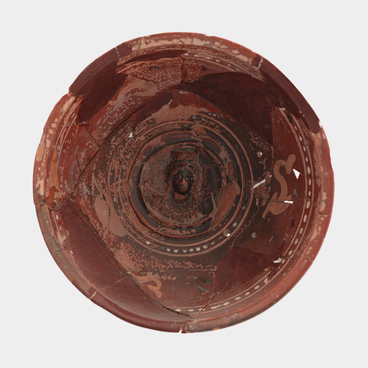Details of wooden jewelry boxes are often found in women’s graves from the early centuries CE in the Northern Black Sea region. Typically, these objects are badly damaged. Decayed wooden parts can be found in the form of rotten or compressed organic matter. Sometimes, archaeologists can trace the outline of a box that once stood in the grave. However, the main evidence that a jewelry box was present in a grave is usually provided by metal parts. There are various types of elements of jewelry boxes, some of which are made of several parts. One such item, a bronze bolt, is on display at the Tanais Archaeological Museum-Reserve.
The bolt was discovered during archaeological excavations at the Tanais necropolis in 1992, together with a key, a herm-shaped hasp, and the front plate of a wooden jewelry box with six bronze nails. The bolt is cast of a single piece of metal, most likely, using a special mold. It consists of three main parts: a tongue that locks the hasp with a herm-shaped top, an openwork frame with slots for the key, and a faceted rod. The bolt itself is a locking device made of metal (in this case, bronze), which can be extended or rotated to fit between the moving and fixed components of the lock, thereby preventing any unwanted or unauthorized movement. When inserted into the keyhole and pressed, the bolt retracts into the lock. A lock may contain two or more bolts, and some locks feature only one large rectangular bolt.
The study of bolts and other parts of jewelry boxes
is essential for understanding the region’s archaeology and history. These
artifacts provide insights into the technical and artistic skills of ancient
craftsmen, as well as information about social and economic life at the time.
Analysis of the structure and materials used in the bolt reveals stylistic
features and influences from other cultures, expanding our knowledge of the
ancient Tanais culture.


